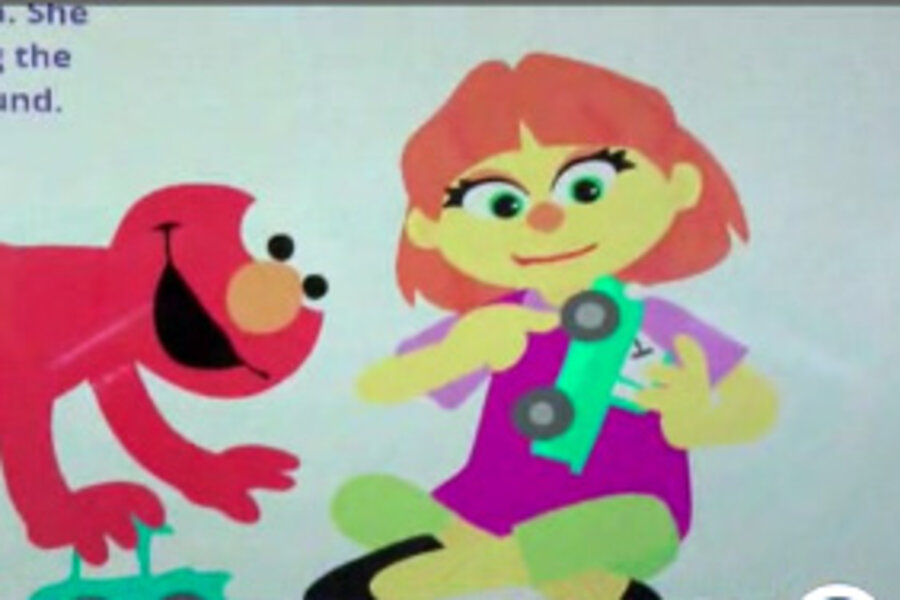Can TV reduce stigma? Ask Julia, the new muppet on 'Sesame Street'
Loading...
The newest kid on Sesame Street is "Julia," a muppet with bright orange hair and big green eyes.
She's also part of the program's newest effort to foster understanding and reduce stigma. That's because "Julia" is a muppet diagnosed with autism.
The new character, an eager learner who "does things a little differently," according to the program, is part of the "Sesame Street and Autism: See Amazing in All Children" initiative, an educational and awareness campaign to destigmatize autism, reduce bullying, and show how autistic kids are the same as other children.
Here's how the Sesame Street describes the challenge:
The lack of understanding around the condition contributes to discrimination, verbal abuse, even physical violence. A recent study reveals that children with autism are five times more likely to be bullied than their peers—treatment no child should endure. While the differences between people with autism and their peers may seem significant, children share something far more important: unique qualities and talents that make the world an interesting place.
"This project is an extension of the belief we've always promoted: 'We are all different, but all the same,' says Sherrie Westin, executive vice president of global impact and philanthropy at Sesame Workshop, said in a statement.
Since its debut in 1969, Sesame Street has been at the forefront of social activism, using its cast of characters and preschool-friendly storylines to showcase diversity (including characters with Down Syndrome and even an HIV-positive muppet in its South African show) and tackle challenging topics like death, homelessness, discrimination, and incarceration.
And experts say its most recent inclusion of an autistic character will go a long way toward reducing stigma and increasing acceptance.
"Research has shown that one of the most effective ways to reduce stereotyping and prejudice is to interact with others who are different from you," says Naomi Ekas, a developmental psychologist at Texas Christian University in Fort Worth, who also runs the university's Families, Autism and Child Emotion Studies Laboratory. "Although children will not be interacting directly with Julia, they will be witnessing other characters interacting with her."
The initiative, geared to kids ages 2 to 5, includes an online storybook, "We're Amazing, 1, 2, 3!" where kids can do just that - see other characters interact with Julia.
In the story, Elmo helps his friend Abby learn about their new friend Julia, while on a playdate.
"Elmo's daddy told Elmo that Julia has autism," he says. "So she does things a little differently. Sometimes Elmo talks to Julia using fewer words and says the same thing a few times. ... Oh, and sometimes Elmo waits a long time for Julia to answer."
"When we explain from a child's point of view that there are certain behaviors, such as slapping their hands or making noises, to express excitement or unhappiness, it helps younger children to understand how to interact with their autistic peers," Jeanette Betancourt, senior vice president of US social impact, told People. "It makes children more comfortable and therefore more inclusive."
Positive media examples can reduce prejudice and stigma, adds Diana Betz, assistant professor of psychology at Siena College in Loudonville, N.Y. That's thanks to the contact hypothesis, a theory in psychology that "says that interactions with members of stereotyped groups can make majority group members feel more positively about them, as long as some conditions are met, like the interaction being meaningful, personal, aimed at a common goal, and conducted in a setting where both groups have equal status," says Professor Betz.
There is precedent for using TV characters to achieve this goal. Researchers have shown that exposure to gay TV figures, such as Ellen DeGeneres, decreases bias against gay people.
For Sesame Street, which over 46 years of airtime in more than 120 countries, has showcased characters of different colors, races, and abilities living together, introducing a character diagnosed with autism is a natural progression.
"Obviously, Sesame Street has a very long history of educating the public about a variety of issues pertaining to diversity," says Jason Seacat, an associate professor psychology at Western New England University in Springfield, Mass. "I think this is another step forward to be inclusive in terms of diversity overall in the human population."








